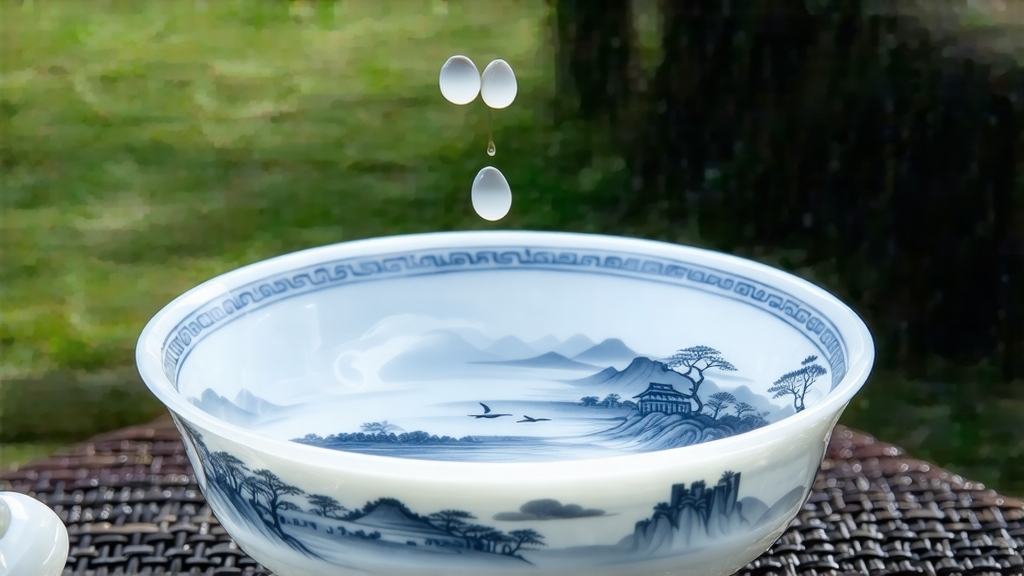
Tucked into the northeastern corner of Fujian Province, where the Wuyi Mountains slip gently toward the East China Sea, lies the small county of Fuding. For more than twelve centuries its hills have been wrapped in a pale, fragrant haze that locals swear smells of fresh melon and wet slate. That haze is the breath of tea: specifically, Fuding White Buds—Bai Hao Yin Zhen in its mother tongue—the most revered expression of China’s minimalist white tea family. To understand this tea is to listen to a whispered history, to witness a craft that borders on meditation, and to taste a liquor so subtle it seems to disappear while it lingers.
Historical roots
The first verifiable record appears in the Song Dynasty treatise “Tea Notes of Daguan” (1107 CE), which praises “white-tipped shoots from Dongling” presented at the imperial court. Yet folklore pushes the origin deeper. Villagers around Taimu Mountain tell of a 9th-century tea maiden named Lan Gu who cured a plague with buds she had sun-dried on a limestone ledge. Grateful survivors planted the seedlings across the valleys; the cultivar they became is today’s Fuding Da Bai Hao, the large-bush variety that yields true Silver Needle. By the late Ming Dynasty the tea had evolved from folk remedy to tribute, traveling north along the Tea-Horse Road in yak-skin pouches sealed with camphor leaves. European accounts from 18th-century Canton mention “silver downy tips” bought at dizzying prices by Swedish East India captains who believed the pale infusion prolonged youth at sea.
Micro-terroir
Fuding’s magic is geological. Granite mother rock weathers into sandy loam rich in quartz and potassium; sea fog drifts inland each dawn, lowering temperature and slowing photosynthesis. The result is a bud densely packed with theanine and volatile terpenes yet low in bitter catechins. Two protected zones matter most: Guan Yang (300–500 m) where ancient seed-grown trees still stand, and Tai Mu’s northern face (600–800 m) where mineral springs surface. Within these micro-zones, elevation differences of only 100 m shift the harvest window by a week and double the amino-acid load in the bud.
Harvest ritual
Plucking begins in mid-March when the first swallow returns, and ends before Qingming festival—an 18-day window when the bud is still closed like a grain of rice, sheathed in down so fine it floats if dropped. Pickers work barefoot to feel the soil’s warmth; they wear wide straw hats lined with indigo cloth to block skin oils from touching the leaf. A seasoned hand can gather 600 g of fresh buds per hour, yet 30,000 buds are needed for one kilogram of finished tea. The harvest is never done after rain, for moisture trapped inside the needle would later sour during withering.
Craft of “doing nothing”
White tea’s philosophy is wu wei—effortless action. Once back at the cottage, the buds are spread one layer deep on water-woven bamboo trays called shai qing. For the next 48–60 hours they rest in a drafty loft whose windows face east and west. Night air cools, day sun warms; the moisture gradient exits the bud so slowly that oxidation enzymes remain largely intact, creating a gentle semi-fermentation invisible to the eye. When the bud’s surface turns goose-down silver and the spine feels leathery, master crafters introduce a final low-temperature bake—no hotter than 40 °C—using charcoal made from local lychee wood. The goal is not to dry but to “set the soul,” locking in a melon-like top note that will re-awaken months later in foreign cups.
Grades & siblings
Strictly speaking, only the single unopened bud qualifies as Silver Needle. Yet the same gardens produce two companion styles:
• White Peony (Bai Mu Dan) — one bud plus the first two leaves, giving a rounder, pollen-sweet cup.
• Shou Mei — later pluck of larger leaves, darker and honeyed, often pressed into cakes that age like mellow Bordeaux.
Within Silver Needle itself, three unofficial grades circulate among wholesalers: “Imperial” (needle length ≥ 3 cm, 100 % down coverage), “Fine” (2.5 cm, 95 % down), and “Gift” (shorter, mixed with broken buds). Connoisseurs, however, judge by aroma alone: the highest grade smells of fresh lychee and wet stone, never of